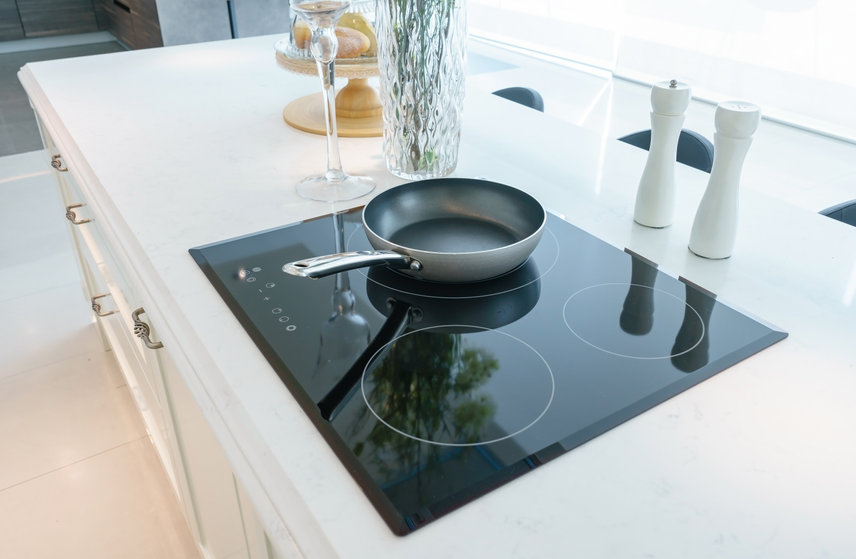Glass-top stoves come with the major benefit of not having to clean or replace burner grates or drip pans. Their sleek and minimalistic look can always be spotted from a distance every time you enter the kitchen. However, if you have ever owned a glass-top stove, you will know that even the smallest of spills or splatters are more noticeable because they show up immediately. Learning how to clean your glass-top stove not only improves the appearance of the kitchen but also keeps the surface free from germs and bacteria. This article discusses some of the best ways to clean a glass-top stove based on the frequency and intensity of dirt.
Things to Consider Before You Start Cleaning
It is important to clean your glass-top stove when the surface is cool. When cleaning these surfaces, you do not have to pull out the heavy housekeeping artillery because abrasive cleaners can cause extensive damage to your stovetop.

Furthermore, the residue from chemical cleaners is not ideal for you to breathe in since they can burn off the surface when you cook. Most importantly, you need to consult your manufacturer’s instructions to know which cleaning products can be used on your glass-top stove. This ensures you do not void any warranties accidentally. Lastly, you need to use gentler tools because scrub brushes and scouring pads could leave scratches. Microfiber cloths or sponges are some of the softer materials you can use. However, razor blades can be exempted from this rule and we will discuss it below to understand why.
- Cleaning Everyday Mess
One of the easiest ways to clean your glass-top stove is to wipe down the surface after every use. The reason for doing this is that any spills or splatter on the surface are still loose and get off quickly if cleaned as soon as possible.
You will need:
- Moistened sponge
- A spray bottle of distilled white vinegar or water
- Microfiber cloth
Procedure:
The glass top stove needs to be cool first before you start the cleaning. The best time is when the cooks finished preparing meals and are onto serving or eating. Spritz the surface with water or vinegar and then wipe away the liquid with a microfiber cloth. You can also use a moistened sponge to wipe through the surface before using the microfiber cloth. Lastly, buff out any streaks with a soft dry cloth.
- Getting Rid of Heavy Deposits
You may consider going a bit further than a simple wipe-down with white vinegar and a microfiber cloth for a routine weekly or monthly cleaning. Chances are that heavy deposits might have accumulated on your glass-top stove and will demand a different approach to get the job done right.
You will need:
- A spray bottle of distilled white vinegar
- Baking soda
- A clean towel
- Microfiber cloths
- A clean bucket or sink basin filled with hot water
Generously spray the surface with vinegar once the stovetop is cool. Sprinkle baking soda liberally over the liquid that is currently resting on the surface (vinegar solution). Dip a clean towel in hot water and wring out the excess liquid. Place this towel over the vinegar and baking soda on the stovetop, and then let it rest for at least 10 to 15 minutes. Remove the towel and use a microfiber cloth to wipe away the baking soda and vinegar from the surface. Repeat the procedure until the surface is free of residue.
- Dealing With Burned-On Stains
Over time, you may encounter inevitable epoxy-like gunk or burnt-on rings around the burners that will not just disappear. When faced with this kind of problem, a sharp razor blade can be the only solution that gets rid of the nightmare.
You will need:
- A scraper tool or a razor blade in a holder
- A spray bottle with distilled white vinegar
- Microfiber cloth
It is important to check your manufacturer’s instructions on how to deal with burned-on stains before you resort to using a razor blade. Once the surface is cool, spritz the vinegar solution on the offending areas to help soften the burnt-on residue. Gently scrape the residue with the razor. Avoid using the corners of the blade instead; hold the cutting edge at a slight angle from the surface. It needs to be as flat as possible. After freeing the debris, use a microfiber cloth to wipe the residue away and repeat the mentioned steps if necessary.
Cleaning your glass-top stove regularly not only keeps your kitchen sparkling but also allows your stove to work properly. Light cleaning is enough to keep it in good shape but only deep clean when you want to get rid of stains and messes that had a chance to set in. Lastly, always check your manufacturer’s instructions to ensure you are using the right cleaning products for your glass-top stove.
